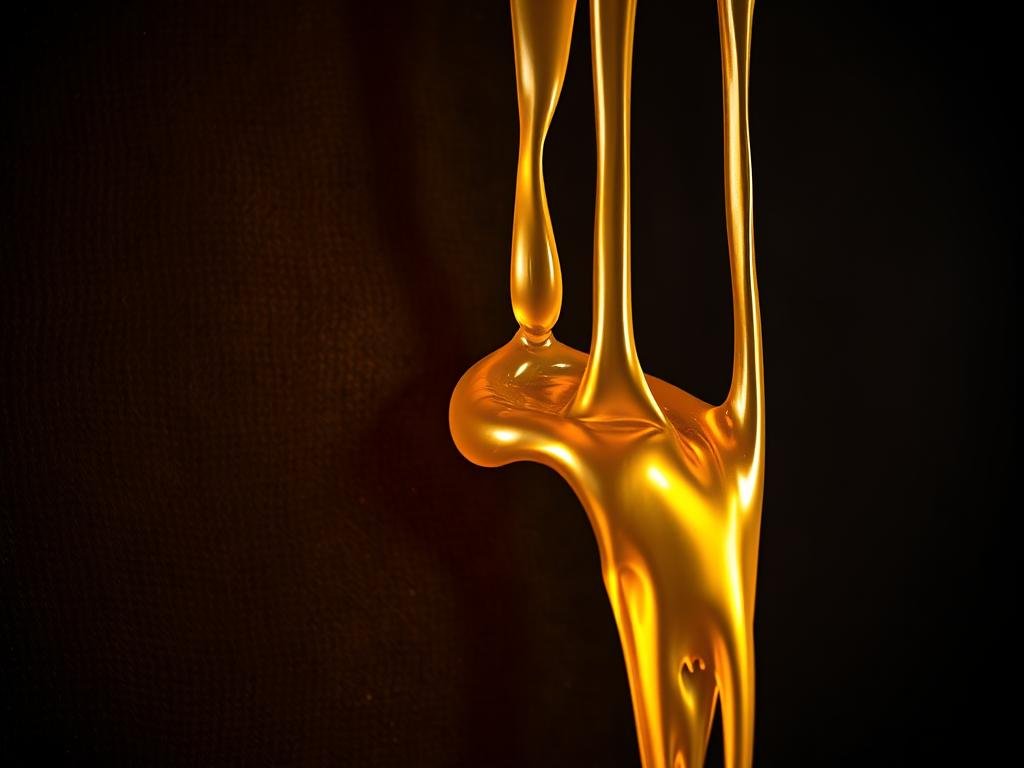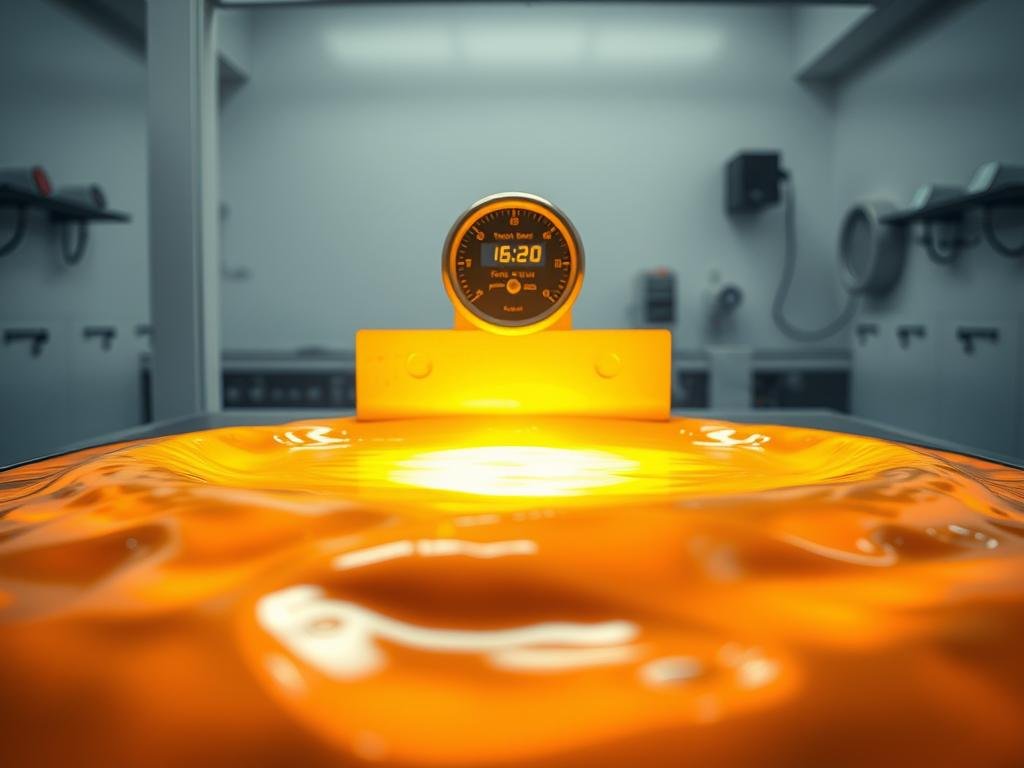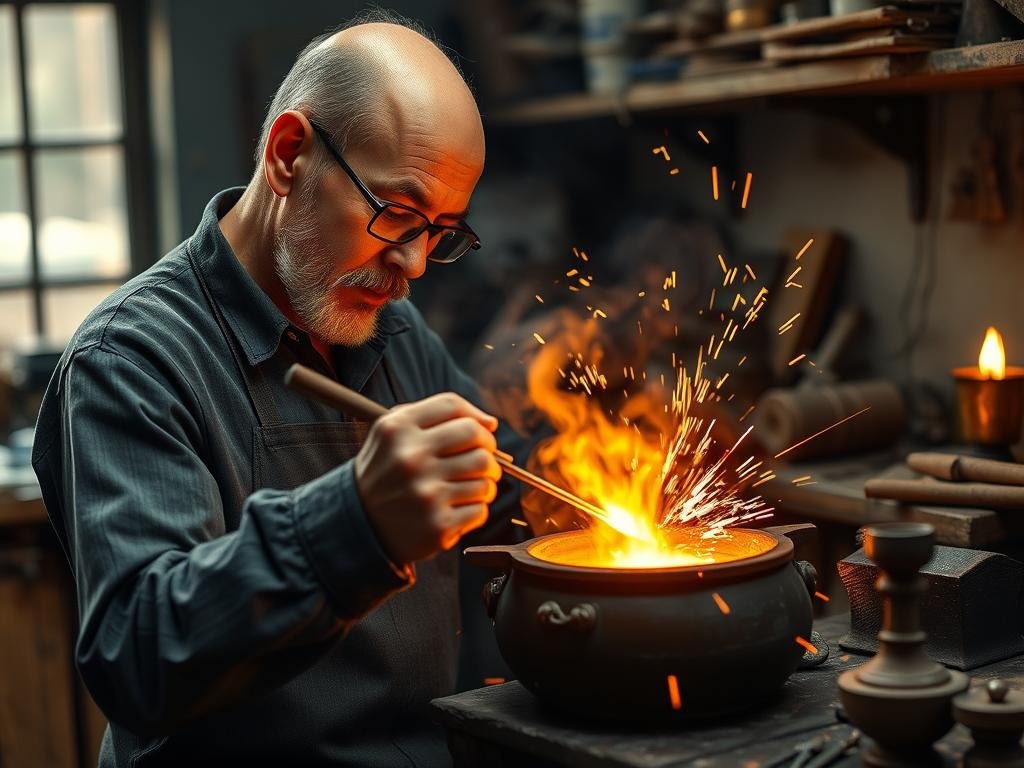Comprendere il punto di fusione dell'oro is essential for professionals in the jewelry and refining industries. Pure gold melts at 1,064 degrees Celsius (1,947 degrees Fahrenheit), a temperature that significantly influences its applications and workability.
This high temperatura makes gold one of the more stable precious metals, though its melting point is lower than that of metals like platinum or palladium. The melting point affects not only gold’s durability and uses in decorative and industrial contexts but also its purity assessment and verification methods.
Throughout this article, we will explore the significance of gold’s melting point, its comparison with other metals, and the importance of precise temperature control when working with gold. By understanding these fundamental properties, professionals can better handle and apply gold in various settings.
Understanding Gold’s Melting Point
Comprendere il comportamento di fusione dell'oro è essenziale per i professionisti del settore, poiché influisce direttamente sulla lavorazione, sull'applicazione e sulla qualità dei prodotti in oro. Il punto di fusione dell'oro è una proprietà critica che ne determina l'utilizzabilità in vari contesti.
The Science Behind Gold’s Melting Temperature
Gold’s high melting point of 1,064°C is attributed to its atomic structure and strong bonding. At the molecular level, gold’s crystal structure remains stable until it reaches this temperature, at which point the bonds begin to break, and the metal transitions from a solid to a liquid state. This temperatura di fusione is crucial for applications involving the casting or refining of gold.
Oro puro vs. leghe d'oro: differenze di punto di fusione
Pure gold, or 24-karat gold, has a distinct melting point compared to gold alloys, which are mixed with other metals like silver, copper, or zinc. These alloys, used in jewelry making, have different melting characteristics. For instance, 14-karat gold melts at a lower temperature than pure gold, typically around 879°C (1,614°F). The addition of other metals lowers the melting point, affecting the workability and application of the alloy.

Gold’s Melting Point: Technical Specifications
Understanding the technical specifications of gold’s melting point is crucial for professionals in jewelry making and refining. Gold’s melting point is a fundamental property that influences various industrial processes.
Exact Melting Temperature of Pure Gold
Pure gold melts at a precise temperature of 1,064 degrees Celsius (1,947 degrees Fahrenheit). This high melting point is a characteristic that distinguishes gold from other metals and plays a crucial role in its applications.

Physical Changes During the Melting Process
When gold is heated to its melting point, it undergoes significant physical changes. These include volume expansion and a change in color. The melting process involves the absorption of heat, known as the latent heat of fusion, which is crucial for the phase change from solid to liquid.
Measuring and Testing Gold’s Melting Point
Accurate measurement of gold’s melting point can be achieved through various methods, including differential scanning calorimetry and traditional furnace techniques. These methods require precise temperature control to ensure reliable results. The melting point test is also used to verify the purity of gold and detect counterfeit products.
How Gold’s Melting Point Compares to Other Precious Metals
Understanding how gold’s melting point compares to other precious metals is crucial for professionals in jewelry making and refining. Gold melts at 1,064°C, which is higher than silver’s melting point of 961°C but lower than copper’s 1,085°C. These differences have significant implications for various applications.
Gold vs. Silver and Copper
When comparing gold to silver and copper, the differences in melting points become apparent. Silver’s lower melting point makes it easier to work with in some applications, while copper’s higher melting point is closer to gold’s, making it a common alloying element. “The choice of metal often depends on the specific requirements of the project, including the desired melting point,” as noted by industry experts.
Gold vs. Platinum and Palladium
Platinum and palladium have even higher melting points than gold, at 1,768°C and 1,555°C, respectively. This means that working with these metals requires specialized equipment and techniques. The higher melting points of platinum and palladium also affect their applications in jewelry and industrial uses.
Practical Implications of These Differences
The differences in melting points among these precious metals have practical implications for manufacturing processes, including casting, soldering, and repair techniques. Understanding these differences helps professionals select the appropriate metal for specific applications based on thermal requirements, ultimately affecting the economic aspects of working with different precious metals.
Factors That Influence Gold’s Melting Point
The melting point of gold is influenced by a range of factors, including impurities, pressure, and its crystalline structure. Understanding these factors is crucial for professionals working with gold, as they can significantly affect the metal’s behavior during heating.
Impact of Impurities and Alloying Elements
Impurities and alloying elements can significantly alter gold’s melting point. For instance, the addition of silver or copper can lower the melting point of gold. Elementi di lega like zinc and nickel also change gold’s melting characteristics. The relationship between alloy composition and melting point is quantifiable, allowing professionals to predict and adjust for these changes.
| Elemento legante | Effetto sul punto di fusione |
|---|---|
| Argento | Lowers melting point |
| Rame | Lowers melting point |
| Zinco | Alters melting characteristics |
Pressure and Environmental Conditions
Pressure is another critical factor that can affect gold’s melting temperature. Under high-pressure conditions, gold may melt at slightly different temperatures. Environmental conditions, such as atmosphere composition and humidity, can also influence the melting process.
Structural and Crystalline Factors
The crystal structure of gold plays a significant role in determining its melting behavior. Grain boundaries can act as weak spots where melting starts more easily. Additionally, particle size, particularly in gold powders or nanoparticles, can significantly alter the observed melting point.
By understanding these factors, professionals can better account for variations in gold’s melting point during different applications, ensuring more accurate and reliable results.
Gold’s Melting Point in Jewelry Making

Understanding gold’s melting point is essential for jewelry designers, as it directly impacts the manufacturing process and final product quality. Gold’s melting point is 1,064°C (1,947°F), allowing jewelers to melt and shape it while retaining its quality.
Casting and Molding Techniques
Jewelry makers use various casting techniques, including lost-wax casting and centrifugal casting, to create intricate designs. Each method requires careful consideration of gold’s melting characteristics to achieve optimal results.
Working with Different Karat Golds
Different karat golds have distinct melting points, with lower karat golds generally melting at lower temperatures than pure gold. For instance, 10K gold melts at a lower temperature than 22K gold. Jewelers must adjust their techniques accordingly to work with different gold alloys.
Controllo della temperatura nel design di gioielli
Il controllo preciso della temperatura è fondamentale nella lavorazione dei gioielli, poiché influisce direttamente sulla qualità del prodotto finale. I gioiellieri utilizzano attrezzature specializzate per mantenere temperature ottimali, garantendo che l'oro venga fuso e modellato correttamente.
Processi di raffinazione dell'oro e requisiti di fusione

Per affinare l'oro in modo efficace, è essenziale comprendere il suo comportamento di fusione in diverse condizioni. Il punto di fusione dell'oro è un fattore critico nel processo di raffinazione, influenzando sia le tecniche che le attrezzature utilizzate.
Il processo di fusione
La fusione coinvolge il riscaldamento della roccia grezza d'oro in un forno fino a farla fondere a temperature superiori a 1.064°C, consentendo alle impurità di galleggiare via e lasciando dietro di sé oro fuso. Il ruolo dei flussi in questo processo è fondamentale poiché aiutano a gestire il punto di fusione elevato dell'oro, garantendo un'estrazione efficiente.
Calcinazione e altri metodi di raffinazione
La cupellatura è una tecnica antica che utilizza le proprietà di fusione dell'oro per separarlo da altri metalli. L'oro impuro viene riscaldato tra i 1.100 e i 1.200°C in una ciotola porosa, ossidando le impurità e ottenendo un oro più puro. Altri metodi tradizionali includono i processi di Miller e Wohlwill, ciascuno con requisiti di temperatura specifici.
Tecnologie moderne di raffinazione
Le raffinerie moderne utilizzano tecnologie a basso consumo energetico come forni a induzione per ridurre al minimo il consumo di energia mantenendo le alte temperature necessarie per la raffinazione dell'oro. Questi progressi aiutano a gestire l'impatto ambientale della raffinazione dell'oro riducendo le esigenze energetiche associate al raggiungimento del punto di fusione dell'oro.
Conclusione: Padroneggiare il Punto di Fusione dell'Oro per Applicazioni Professionali
Comprendere il comportamento di fusione dell'oro è essenziale per ottenere precisione nella lavorazione e raffinazione dei gioielli. L'oro si fonde a 1.064°C (1.947°F), una temperatura che influenza significativamente il suo processo e applicazione in diversi settori.
Il punto di fusione dell'oro è un fattore critico che lo distingue da altri metalli preziosi come l'argento, il rame e il platino. Ad esempio, l'argento si fonde a una temperatura più bassa di 962°C (1764°F), mentre il platino si fonde a una temperatura molto più alta di 1.768°C (3.214°F). Questa differenza in punti di fusione influisce sulle tecniche utilizzate nella produzione e nei processi di raffinazione dei gioielli.
Diversi fattori influenzano il punto di fusione dell'oro, tra cui la sua purezza, gli elementi di lega e le considerazioni strutturali. L'aggiunta di altri metalli può aumentare o diminuire il suo punto di fusione, influenzando così la sua utilizzabilità in diverse applicazioni. Comprendere questi fattori è fondamentale per massimizzare l'efficienza e ottenere una elevata purezza nella raffinazione dell'oro.
Nella lavorazione dei gioielli, la conoscenza della temperatura di fusione dell'oro consente la creazione di design intricati e durevoli. Inoltre, le tecnologie emergenti sfruttano la conoscenza precisa del comportamento di fusione dell'oro per sviluppare nuove tecniche e applicazioni, in particolare nell'elettronica, dove la resistenza al calore e la conducibilità dell'oro sono inestimabili.
Padroneggiare la scienza del punto di fusione dell'oro è essenziale per i professionisti che lavorano con questo metallo prezioso. Applicando questa conoscenza, i professionisti possono ottenere risultati migliori e promuovere innovazioni nei loro rispettivi settori.
